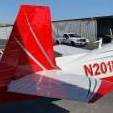STEC-60 Frustration
-
Members Online
- salty
- Ibra
- Greg_D
- Shadrach
- Ragsf15e
- PT20J
- MatthiasArnold
- tankles
- Grumpy
- FLYFST
- Barclayaaron
- Shrobby
- Yetti
- 00-Negative
- Spensei
- Tmooney
- FlyingDude
- NickG
- EricJ
- eman1200
- jlunseth
- jeff s
- N757DL
- phxcobraz
- daytonabch04
- takair
- acekng1
- DXB
- Capt.Ron
- Pinecone
- Zippy_Bird
- M20S Driver
- Jake@BevanAviation
- Hank
- MarkC
- Cutlater
- Mark Staggs
- vik
- mike_elliott


Recommended Posts
Join the conversation
You can post now and register later. If you have an account, sign in now to post with your account.